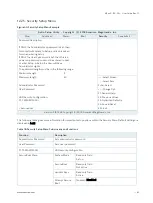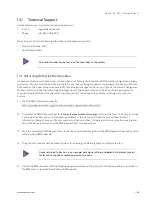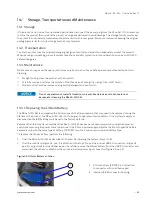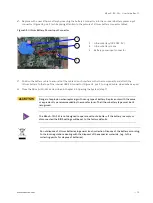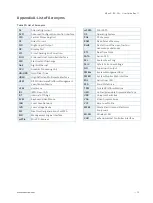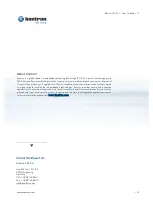
KBox A-150-SKL - User Guide Rev. 1.1
// 69
14/
Storage, Transportation and Maintenance
Storage
14.1.
If the product is not in use for an extended period time, disconnect the power plug from the AC outlet .If it is necessary
to store the product then re-pack the product as originally delivered to avoid damage. The storage facility must meet
the products environmental requirements as stated within this user guide. Kontron recommends keeping the original
packaging material for future storage or warranty shipments.
Transportation
14.2.
To ship the product use the original packaging, designed to withstand impact and adequately protect the product.
When packing or unpacking products always take shock and ESD protection into consideration and use an EOS/ESD
safe working area.
Maintenance
14.3.
Maintenance or repair on the open product may only be carried out by qualified personnel authorized by Kontron.
Cleaning:
For light soiling, clean the product with a dry cloth.
Carefully remove dust from the surface of the chassis and cooling fins using a clean, soft brush.
Stubborn dirt should be removed using a mild detergent and a soft cloth
Do not use steel wool, metallic threads or solvents like abrasives, alcohol, acetone or
benzene for cleaning the KBox A-150-SKL
14.3.1.
Replacing the Lithium Battery
The KBox A-150-SKL is equipped with a Kontron specific battery assembly that may need to be replaced during the
lifetime of the product. The KBox A-150-SKL is not designed to operate without a battery. If the battery is empty or
disconnected, the BIOS settings will be set to the factory defaults.
Replaced the lithium battery only when the KBox A-150-SKL has been shut down properly by using the power-on
switch and removing the power cable to disconnect the DC main power supply. Replace the Kontron specific battery
assembly only with the same type of battery (CR 2032) or with a Kontron recommended battery type.
To replace the Lithium battery, perform the following:
1.
Open the KBox A-150-SKL as described in Chapter 6.2: Opening the System (steps 1 to 6)
1.
The lithium battery (Figure 42, pos. 1) is attached to the top of one of the internal USB 3.0 connectors (Figure 42,
pos. 2) using a double –sided adhesive pad. Carefully, remove the lithium battery from the USB 3.0 connector and
disconnect the battery’s cable from the on-board battery power input connector (Figure 43, pos. 3).
Figure 42: Lithium Battery Location
1
Lithium battery (CR 2032, 3 V ) attached
to connector with an adhesive pad
2
Internal USB 3.0 connector housing
1
2











